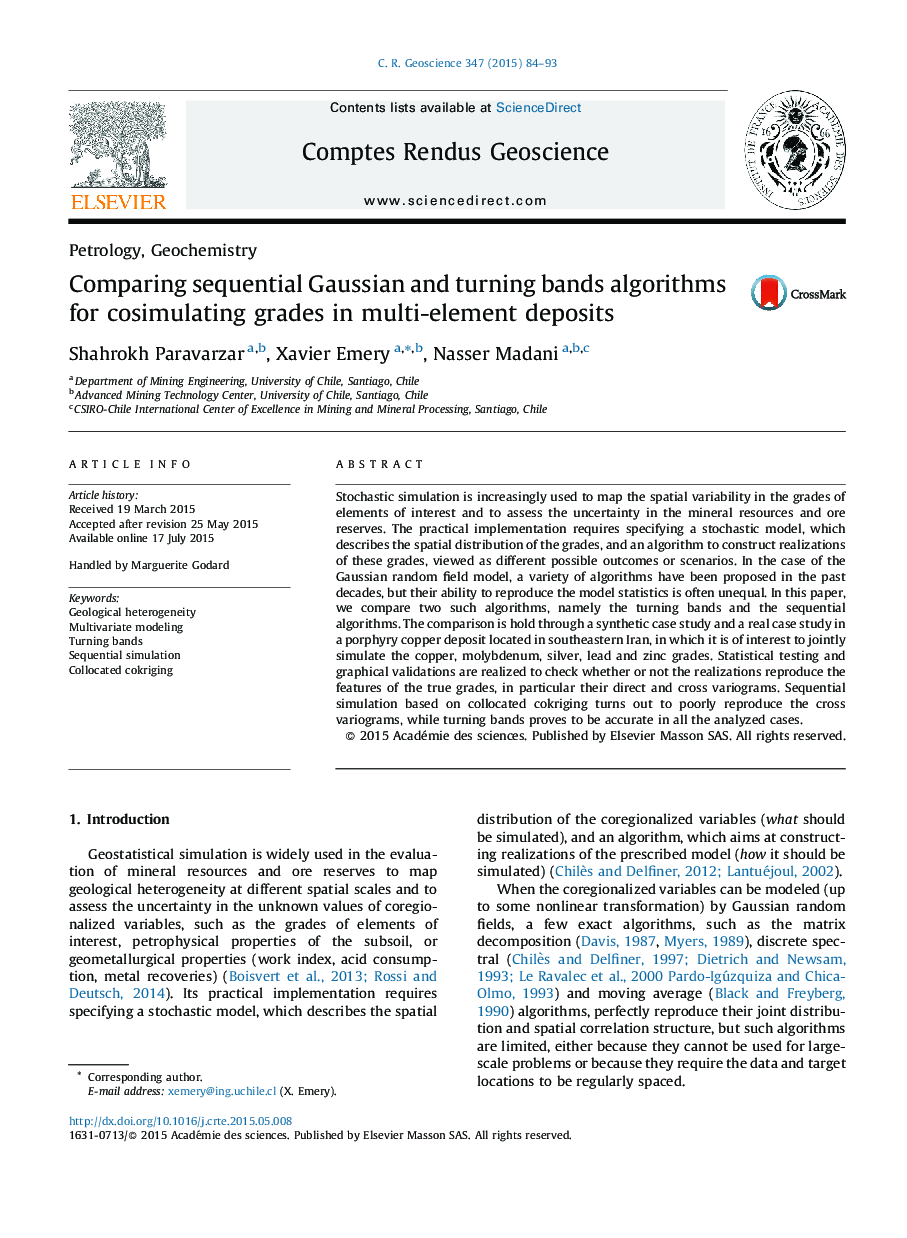| کد مقاله | کد نشریه | سال انتشار | مقاله انگلیسی | نسخه تمام متن |
|---|---|---|---|---|
| 4462225 | 1313480 | 2015 | 10 صفحه PDF | دانلود رایگان |
Stochastic simulation is increasingly used to map the spatial variability in the grades of elements of interest and to assess the uncertainty in the mineral resources and ore reserves. The practical implementation requires specifying a stochastic model, which describes the spatial distribution of the grades, and an algorithm to construct realizations of these grades, viewed as different possible outcomes or scenarios. In the case of the Gaussian random field model, a variety of algorithms have been proposed in the past decades, but their ability to reproduce the model statistics is often unequal. In this paper, we compare two such algorithms, namely the turning bands and the sequential algorithms. The comparison is hold through a synthetic case study and a real case study in a porphyry copper deposit located in southeastern Iran, in which it is of interest to jointly simulate the copper, molybdenum, silver, lead and zinc grades. Statistical testing and graphical validations are realized to check whether or not the realizations reproduce the features of the true grades, in particular their direct and cross variograms. Sequential simulation based on collocated cokriging turns out to poorly reproduce the cross variograms, while turning bands proves to be accurate in all the analyzed cases.
Journal: Comptes Rendus Geoscience - Volume 347, Issue 2, March–April 2015, Pages 84–93
